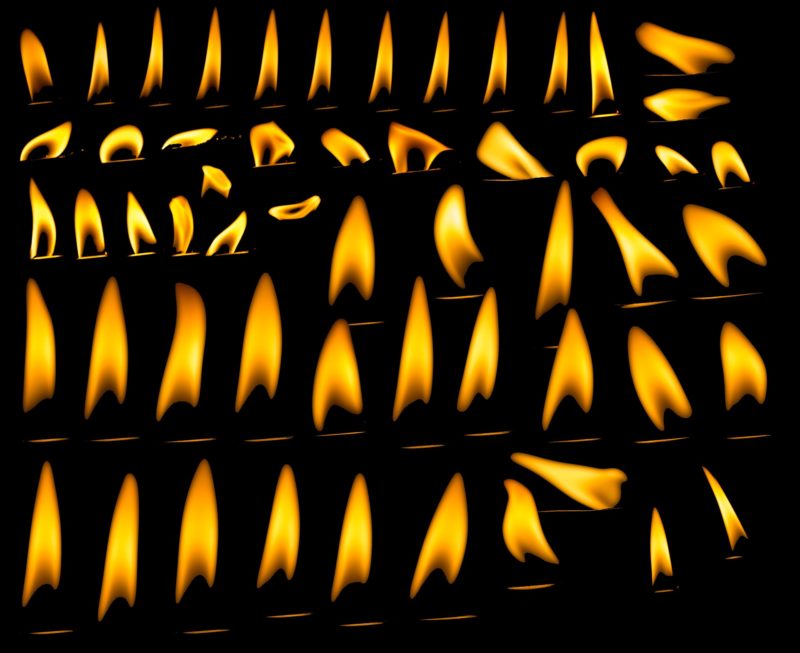A candle’s wick is often formed of braided cotton, with thin wire added as a stiffener. The wick is the component of a candle or lamp that is lit. But the question is, what are candle wicks made of?
Fuel travels through capillarity along with the wick to the flame to keep it alive. Fuel can be liquid fuel in a lamp, melted candle wax, or spirit. These, when mixed with oxygen, burn to generate a flame.

A candle is made up of a wick that is trapped in wax or a combustible substance. It may be used for light, fragrance, and special events such as birthdays, candle-lit meals, and memorials. A wick’s function is to provide fuel to the flame.
The wick, like a gasoline pump, pulls the liquid wax up into the flame to burn. The amount of fuel sucked into the flame is determined by the size of the wick. When there is too much fuel, the flame will blaze and scorch; if there is not enough fuel, the flame will flicker out.
Wicks come in hundreds of different kinds and sizes. The wick selection is influenced by the type of wax used in a candle, as well as its size, shape, color, and aroma components. Choosing the right wick is essential for creating a candle that burns cleanly and correctly.
History of Candles
The term candle comes from the Middle English word candle, which means “to glow.” Oil lamps with wicks were used before the invention of candles. Dipped candles were invented by the Romans in approximately 500 BCE.
The first surviving candles date back to the Han Dynasty in China circa 200 BCE. Candle-making had become a skilled craft by the Middle Ages. Because they burnt the cleanest, beeswax candles were widely used in religious rituals.
They were too costly for most people, who instead used tallow candles. In 1834, Joseph Morgan designed the first equipment for the mass manufacture of candles. It transformed the candle business and made candles more inexpensive.
Characteristics of a Wick
The characteristics of a wick, such as stiffness, diameter, anchoring, and fire resistance, will determine how a flame burns. A wick may contain a tiny wire, usually made of copper. The wire stiffens the wick and also functions as a conductor, directing heat downwards, causing the wax to melt readily.
Synthetic fibers or paper can also be used to stiffen a wick. Lead was previously used. However, due to the risk of lead contamination, it is currently illegal in the United States and other nations.
In nature, flat braided wicks are self-contained. As they ignite, they curl back into the flame. Wicks are frequently preconditioned with noncombustible compounds such as borax and salt to keep them from catching fire.
Types of Candles
Wicks with a larger diameter create larger flames, which causes a candle to melt faster. The wick of a candle encased in a cup, often known as a tea light, is attached to a piece of metal. The wax in tea lights can melt.
The metal prevents the wick from floating on top of the wax and burning out before the wax. There are also candles designed to float in water. These candles include a tether to hold the wick in place and a bottom seal to keep water out of the wick.
Some birthday candles have a small stump for a wick, which causes them to burn out quickly. Wicks can be made from materials other than cotton and cord, however, this is uncommon. Wicks have been made from materials such as wood in some cases.
Are Candle Wicks Important?
Candle producers think that, aside from color, form, and aroma, the wick is the most important component of a candle. Braided and knitted wicks are superior to loosely twisted wicks in terms of quality and burn time. Choosing the perfect wick for a candle is critical to ensure that the candle burns properly and safely.
What are Candle Wicks Made Of?
Cotton Wicks vs Wooden Wicks
If you’re wondering what are candle wicks made of, you can always go for a wooden one. Wooden wicks are narrow slabs or tubes of wood that have been specifically designed for candle manufacture. They provide a wonderful crackling sound but need a bit more care and attention. Cotton wicks are interwoven cotton fibers that have been waxed and pressed in order to maintain their form.
Cotton wicks are widely utilized in the production of low-cost, easy-to-maintain candles. Both hardwood and cotton wicks ignite and take flame fast when lit for the first time. The wooden type will require a little more amount of care during the second and future burnings.
Cotton wicks are a grab-and-go candle; shorten the wick and they’ll light in three seconds; however, hardwood wicks may take up to twenty seconds to burn up.
A wooden wick candle may require two or three efforts to return. This is because the fire takes longer to reach the outer, more burned layers of wood. Candles with wooden wicks are extremely difficult to light with a match.
We discovered that there just isn’t enough flame by the length of a match to effectively provide fire to a wooden wick. For the time it takes to hold the flame on the wick, there will be match debris within the candle wax. It will become a fire danger; you wouldn’t want to burn your new sofa.
Conclusion on What Are Candle Wicks Made Of
So, what are candle wicks made of? Usually, people think it’s just a simple string that we attach to our candles. But, it is actually more than that and it makes a big difference in our candles.
